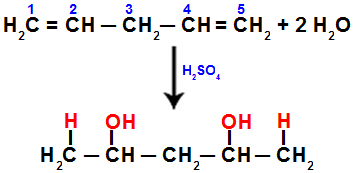Napoleon Bonaparte's dexterity and skill as a military strategist is notorious. Before coming to power in France in 1799 and starting the call Napoleonic era (1799-1815), the French leader was already a respectable young general who aroused fascination in both his peers and his enemies. The greatest of Napoleon's military feats, which marked the conquests of the Napoleonic Wars, went to Battleinausterlitz, which took place in the Moravia region, present-day Czech Republic, in 1805.
It is worth remembering that the year 1805 was the height of the Napoleonic Wars. In October of that same year, Napoleon suffered a crushing defeat at sea by the English army, led by the AdmiralNelson: the famous Battleintrafalgar. From that defeat, Napoleon, who had made himself Emperor of France a year earlier, knew that he must face the English in another way. The Continental Blockade would be his strategy. At the same time, Napoleon also knew that he needed to concentrate forces against the two main powers on the continent: the Russian Empire and the Austrian Empire.
The French Empire, heir of the 1789 revolution, raised the banner of the liberation of peoples, liberation from the yoke of absolutist monarchies, which, according to the advocates of NationFrench, they imprisoned the citizens under the moniker of the king's subjects. Napoleon's march against Russia and Austria had an authoritarian bias with a libertarian mask. On November 13, 1805, Napoleon invaded Vienna (capital of Austria), anticipating a possible maneuver by the British against their armies. On December 2, 1805, the battle took place at Austerlitz that would crush the Russians and the Austrians and give Napoleon hegemony on the continent for about ten years.
THE Battle of Austerlitz it lasted about nine hours. There were 80 thousand Russians and 25 thousand Austrians against 75 thousand French. The latter, despite being outnumbered, liquidated the two armies. Napoleon's triumph over Russia and Austria consecrated him as emperor and, even more, confirmed his imperialist yearnings, as emphasized by historian Marco Mondaini:
“[...] the Battle of Austerlitz ended up becoming, for Napoleon, a mixture of imperial consecration and the apogee of a military strategist. Also known as the Battle of the Three Emperors, Austerlitz had as its basic weapons: rifles adapted with bayonets in their spikes (infantry), sabers (cavalry) and cannons with ammunition box of the system developed by General Gribeauval, in the decade of 1770 – armament that would be used throughout the period of the Napoleonic Wars, having been kept in use until the 1820s and 1830.” [1]
This armament innovation was decisive for the Napoleonic victory. The hegemony of the French army would last until 1815, the year in which Napoleon was definitively exiled on the island of Saint Helena, and in which the agreements of the Congress of Vienna, whose projects foresaw the restoration of the absolutist order in Europe, as it had been in force since before the French Revolution start.
GRADES
[1] MONDAINI, Marco. Napoleonic Wars. In: MAGNOLI, Demetrius. (org). History of Wars. São Paulo: Context, 2013. for. 206.
By Me. Cláudio Fernandes
Source: Brazil School - https://brasilescola.uol.com.br/guerras/batalha-austerlitz.htm


